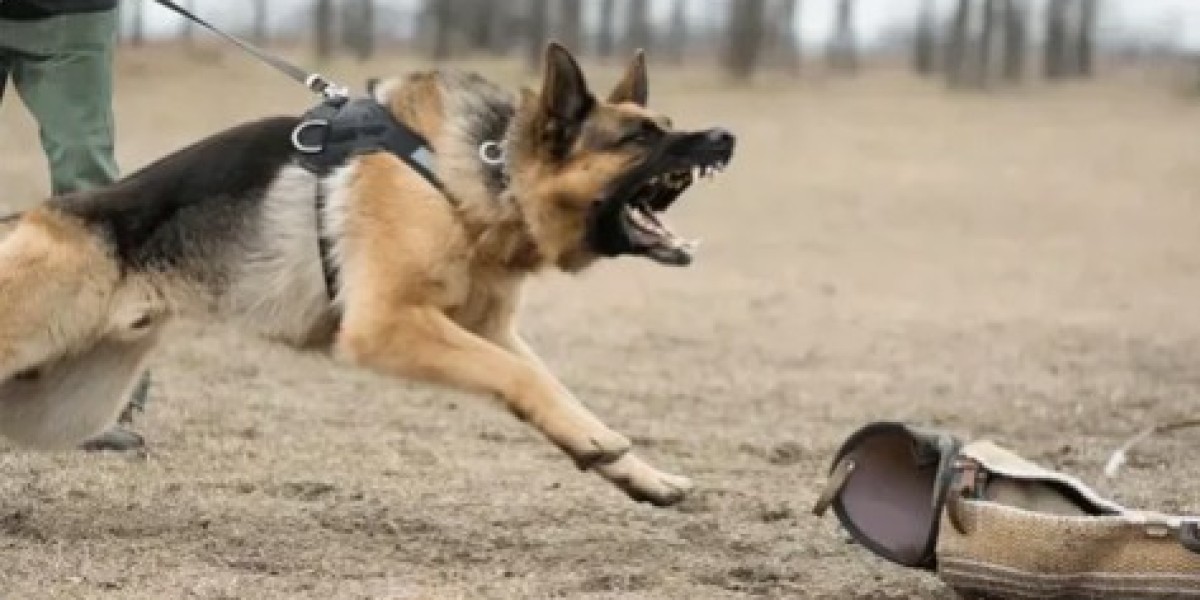In a world where personal safety and property protection are paramount, the role of trained attack dogs has become increasingly significant. These highly skilled canines are not just pets—they are disciplined, intelligent, and powerful protectors, capable of responding to threats with precision and efficiency. Whether for personal security, business protection, or law enforcement, trained attack dogs provide unmatched peace of mind.
What Are Trained Attack Dogs?
Trained attack dogs are specially selected and trained canines taught to defend their handler, property, or a designated area from potential threats. Unlike ordinary dogs, these animals undergo rigorous training to ensure they respond accurately to commands, distinguish between real threats and non-threats, and maintain control in high-stress situations.
Common breeds used as trained attack dogs include the German Shepherd, Belgian Malinois, Doberman Pinscher, and Rottweiler. These breeds are chosen for their intelligence, agility, strength, and loyalty, making them ideal for professional security roles.
Key Features of Trained Attack Dogs
- Advanced Obedience: Trained attack dogs respond instantly to verbal commands and hand signals. This high level of obedience ensures that the dog remains under control in potentially dangerous scenarios.
- Protective Instincts: These dogs possess an innate drive to protect their handler and territory. Training enhances these instincts, focusing their attention on potential threats while ignoring non-threatening situations.
- Physical Strength and Agility: Attack dogs are trained to be physically capable of restraining or subduing an intruder. Their training emphasizes endurance, agility, and strength to handle real-world scenarios effectively.
- Situational Awareness: Unlike regular pets, trained attack dogs are taught to assess situations, react appropriately, and distinguish between friend and foe. This critical skill ensures safety without unnecessary aggression.
The Training Process
Training attack dogs is a specialized field that requires experience, patience, and a structured program. The process typically involves several stages:
- Basic Obedience: Before learning protective behaviors, dogs must master basic commands such as sit, stay, come, heel, and down. This foundation ensures that they can be reliably controlled in any situation.
- Socialization: A well-socialized dog can differentiate between normal social interactions and potential threats. During training, dogs are exposed to various environments, people, and situations to prevent fear-based aggression.
- Protection Training: This phase focuses on teaching the dog to protect its handler and territory. Techniques may include controlled biting, restraint, and deterring intruders. Dogs are trained to attack only on command or in response to immediate danger.
- Scenario Training: Advanced attack dogs undergo realistic scenario-based training. This could involve simulated break-ins, aggressive behavior from strangers, or defensive exercises to ensure the dog can handle real-world threats.
- Continuous Reinforcement: Regular practice is essential to maintain a trained attack dog’s skills. Handlers often work with their dogs daily, reinforcing obedience and protective behaviors to ensure readiness at all times.
Benefits of Owning a Trained Attack Dog
Investing in a trained attack dog offers several advantages over traditional security measures:
- Deterrent Effect: The presence of a trained attack dog alone can deter potential intruders. Criminals are less likely to target a home or business where a powerful, protective dog is present.
- Immediate Response: Unlike alarms or surveillance systems, attack dogs can respond instantly to threats. Their speed, agility, and strength allow them to neutralize danger before it escalates.
- Loyal Companionship: Beyond protection, trained attack dogs offer unwavering loyalty and companionship. They form strong bonds with their handlers, enhancing both security and emotional well-being.
- Versatility: These dogs can serve in multiple security roles, including personal protection, property defense, and law enforcement support. They are adaptable to various environments and situations.
- Cost-Effective Security: While trained attack dogs require an upfront investment, they often prove more cost-effective than constant security personnel or advanced alarm systems in the long term.
Choosing the Right Trained Attack Dog
Selecting the right dog for protection involves considering breed characteristics, temperament, and training requirements. Some top breeds for attack dog training include:
- German Shepherds: Known for their intelligence, courage, and versatility, German Shepherds are a popular choice for personal and professional protection.
- Belgian Malinois: Highly energetic and extremely trainable, Malinois are often used in military and police work.
- Doberman Pinschers: Agile and alert, Dobermans make excellent family and personal protection dogs.
- Rottweilers: Strong and fearless, Rottweilers are effective in guarding property and deterring intruders.
It is essential to work with reputable trainers and breeders to ensure the dog is both physically capable and psychologically suited for attack training.
Safety and Legal Considerations
Owning a trained attack dog comes with responsibilities. Handlers must ensure the dog is well-trained, socialized, and under control at all times. Additionally, local laws and regulations regarding the ownership of protection dogs must be observed to avoid legal complications. Proper liability insurance and safety measures, such as secure fencing and warning signs, are recommended to protect both the owner and the public.
Training Professionals vs. DIY Training
While some dog owners attempt to train their own attack dogs, professional trainers are highly recommended. Experts provide structured programs, advanced techniques, and safety protocols that minimize risk to both the dog and handler. Professional training ensures that the dog is reliable, obedient, and capable of responding appropriately in high-pressure situations.
Real-World Applications
Trained attack dogs are utilized in a variety of scenarios, including:
- Personal Protection: Individuals seeking enhanced safety can rely on attack dogs to provide protection at home or while traveling.
- Business Security: Companies use trained attack dogs to safeguard property, deter theft, and enhance overall security measures.
- Law Enforcement and Military: Police and military units use attack dogs for crowd control, suspect apprehension, and high-risk operations.
- Residential Communities: Gated communities and private estates employ attack dogs to ensure the safety of residents and property.
Conclusion
Trained attack dogs are more than just a security measure—they are loyal, intelligent, and powerful partners in personal and property protection. With the right breed, professional training, and responsible handling, these dogs provide unparalleled safety and peace of mind. Whether for personal protection, business security, or law enforcement, trained attack dogs remain an essential asset in safeguarding lives and property.
Investing in a trained attack dog is an investment in safety, reliability, and peace of mind. For those serious about security, these elite canines offer a level of protection that technology and human personnel alone cannot match.





